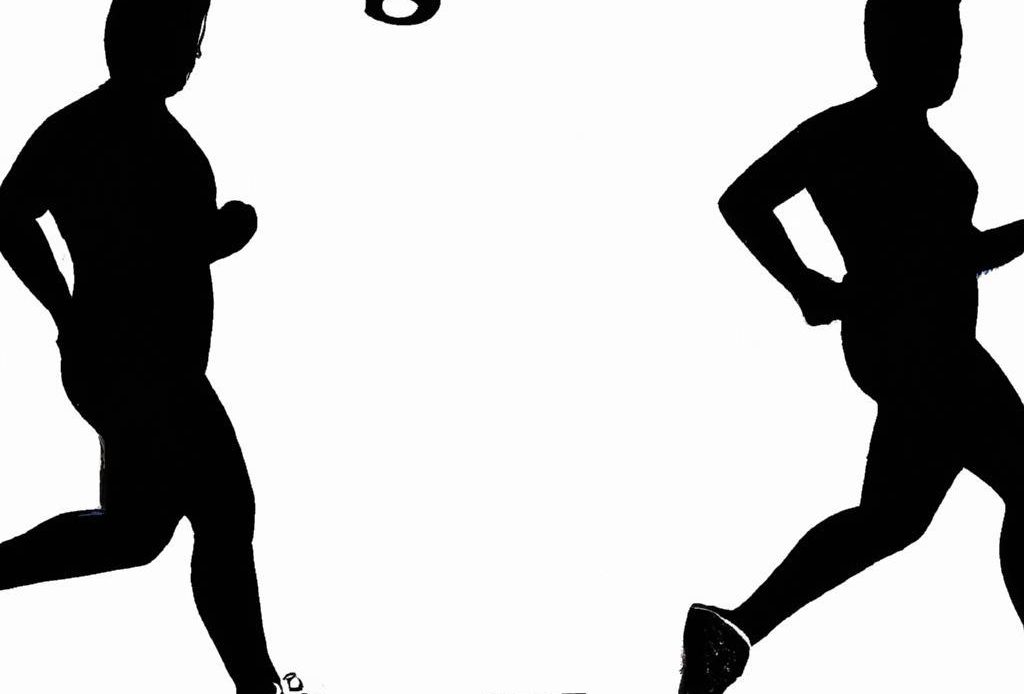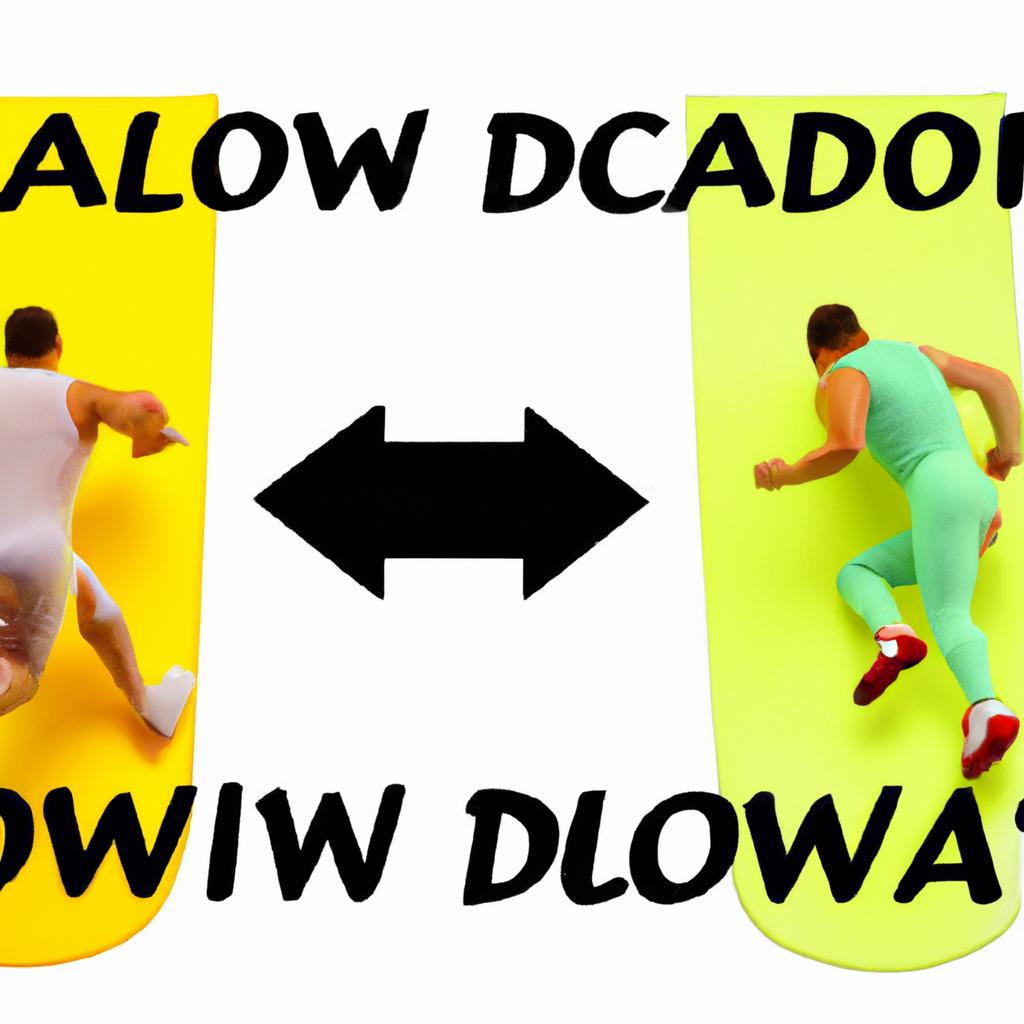
In the quest for a healthier lifestyle, two popular forms of cardiovascular exercise often take center stage: jogging and running. While both activities open the door to numerous physical benefits, they can also stir up a myriad of questions for fitness enthusiasts and beginners alike. What sets them apart, and, more critically, which one holds the upper hand in the ongoing battle against belly fat and weight loss? Join us as we delve into the nuances of each discipline, exploring their unique contributions to shedding those stubborn pounds and unveiling the science behind their effectiveness. Whether you’re lacing up your sneakers for a leisurely jog or gearing up for a high-octane run, the answers might just transform your fitness journey. Let’s step into the arena of jogging versus running and uncover the strategies that can help you achieve your weight loss goals.
The Caloric Showdown: Jogging vs. Running in the Fight Against Belly Fat
When it comes to shedding those stubborn pounds and tackling that pesky belly fat, both jogging and running have their unique strengths. **Jogging**, often characterized by a slower, more relaxed pace, provides a steady, almost meditative workout experience. It enables individuals to engage in longer sessions without exhausting themselves too quickly. Here are some advantages of jogging:
- Lower intensity: This allows for longer durations, which can ultimately burn more calories over time.
- Less risk of injury: A gentler approach can be easier on the joints, promoting sustainability in the long run.
- Accessible to all levels: Whether you’re a beginner or an experienced athlete, jogging can easily be adapted to your fitness level.
On the other hand, running, often sprinted at a high intensity, tends to dominate when it comes to burning calories in a shorter time span. This heightened intensity not only blasts calories but also potentially boosts metabolism up to 24 hours post-exercise. Consider these benefits of running:
- Higher calorie burn: For those seeking rapid results, running generally burns more calories per mile.
- Improved cardiovascular fitness: The challenge of running helps strengthen your heart and improve endurance more effectively.
- Increased muscle engagement: Running engages more muscle groups, which can lead to a more toned appearance.
To help visualize the differences, here’s a quick comparison of calorie expenditure between jogging and running:
| Activity | Calories Burned per 30 Minutes |
|---|---|
| Jogging (5 mph) | 240-355 |
| Running (6 mph) | 300-450 |
| Running (8 mph) | 480-710 |
In the ultimate showdown, personal goals, fitness levels, and preferences will dictate which path to take in the quest for reduced belly fat. Both methods hold significant merit, proving that whether you choose to jog or run, consistency and intensity are your best allies in achieving weight loss and fat reduction. Choose your weapon wisely!

Finding Your Rhythm: Tailoring Intensity for Optimal Weight Loss
When it comes to shedding excess belly fat and achieving weight loss goals, understanding the balance between intensity and duration is essential. Many fitness enthusiasts turn to jogging and running, but the intensity at which you engage in these activities can significantly impact your results. Consider the following factors when tailoring your workout intensity:
- Heart Rate Zones: Monitoring your heart rate helps in determining the intensity level that maximizes fat burning.
- Duration vs. Intensity: Short bursts of high-intensity running may burn more calories in a shorter time frame compared to longer, steady jogging sessions.
- Personal Fitness Level: Beginners might benefit more from a gradual increase in intensity to avoid injury and promote consistent progress.
To further illustrate the relationship between jogging and running intensity and its impact on weight loss, consider the following breakdown of calorie burn based on activity duration:
| Activity | Duration (30 mins) | Approx. Calories Burned |
|---|---|---|
| Jogging (5 mph) | 30 minutes | 240 calories |
| Running (6 mph) | 30 minutes | 300 calories |
| Running (8 mph) | 30 minutes | 400 calories |
This table reveals that while jogging is beneficial for long-duration workouts, running at higher speeds can accelerate calorie burn significantly within the same time frame. By customizing your workouts to incorporate varied intensities, you can effectively find your rhythm and optimize your weight loss journey, adjusting your exercise strategy as needed to keep progress on track.

Beyond the Miles: Nutritional Strategies to Enhance Your Jogging and Running Regimen
To truly optimize your jogging and running experience, it’s essential to pair your physical activity with smart nutritional choices. Incorporating a well-balanced diet can boost your energy levels, enhance recovery, and maximize fat loss. Here are some **key strategies** to consider:
- Hydration is Essential: Maintain optimal hydration levels before, during, and after your runs. Opt for water or electrolyte-rich beverages to keep your body functioning at its best.
- Pre-Run Nutrition: Fuel up with easily digestible carbohydrates such as bananas or oatmeal. This helps provide quick energy while avoiding any digestive distress.
- Post-Run Recovery: Incorporate a mix of proteins and carbs post-exercise to aid muscle repair. Think of options like a protein shake or a whole grain sandwich with lean protein.
- Mindful Snacking: Snack on nutrient-dense foods like nuts, Greek yogurt, or berries. These choices support energy levels without excessive calories.
| Food Source | Nutritional Benefits |
|---|---|
| Bananas | Quick energy and potassium for muscle function |
| Oatmeal | Complex carbs for sustained energy |
| Protein Shake | Aids muscle repair and recovery |
| Greek Yogurt | Protein-rich and beneficial probiotics |
Additionally, consider tailoring your intake to your individual energy needs and running goals. Maintaining a consistent eating schedule can also play a significant role in enhancing performance and supporting weight loss efforts. Focus on a **variety of whole foods** to ensure you’re getting the necessary vitamins and minerals. Keep a food diary to track how different foods affect your performance and energy levels, helping you make informed choices.
Final Thoughts
In the ultimate showdown between jogging and running, both disciplines emerge as valiant allies in the quest for belly fat reduction and weight loss. While each has its unique rhythm and pace, the true winner lies in the personal journey that transforms sweat into success. Whether you prefer the steady cadence of a jog or the invigorating burst of a run, the important takeaway is that consistent movement fosters not only physical health but also mental well-being.
As you lace up your shoes and step onto your chosen path, remember that embracing a routine that resonates with you is key. The battle against belly fat is not a sprint but a marathon of dedication, with every stride bringing you closer to your goals. Ultimately, it’s about finding joy in the journey, celebrating your progress, and discovering what works best for your body. So, take a deep breath, hit the ground running—or jogging—and let the adventure begin. After all, every step counts in this transformative dance with fitness!

